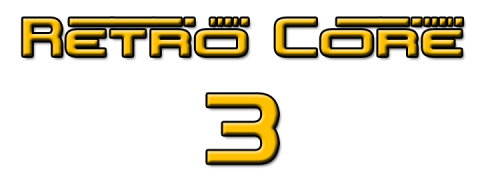Posted Wednesday, 8th February 2012 under Soapbox rants
4 Comments »

I want to pre-empt this post with a foreword.
I continue to admire Hyper’s presence in the Australian market – it’s amazing that it continues to hit shelves each month with plenty of great content and coverage of the gaming sector and flies in the face of the downturn being experienced locally and overseas. Even in the wake of US stalwarts, our amazing piece of home-grown gaming journo goodness still comes out each month. Amazing stuff. So this post isn’t meant in any way to take a jab at the magazine, because I have a huge amount of respect and nostalgia-infused love for the publication.
I finished going through the Complete History of Racing Games special in the February 2012 issue (#220) this morning and wanted to write my thoughts on the piece. On the whole, it’s a very nice read – there was great attention paid to the early development of the genre in the arcade and at home, and I really liked the attention given to the home computers of the 80s (especially the C64!). My issues come with a lack of coverage and a bit of bias once things heat up and we hit the mid-90s.
On the arcade side, Virtua Racing was given it’s due, but Daytona was given less attention than Ridge Racer. While the latter’s important as a response to Daytona, the impact Daytona made was enormous as it arguably became the peak of racing games in the arcades, with no title that followed proving as successful. In fact, the success of Daytona was a huge boost to the Model 2 arcade platform Sega used in the mid-90s and saw it become one of the most successful arcade platforms ever, easily putting it in the same realm as the MVS and the Naomi. Namco still did well with Ridge Racer and the System 22 platform, but it is no way comparable to the magic of AM2’s accessible creation.
Another area of contention was the complete disregard to the Saturn. Multiple paragraphs are dedicated to the PSone, and that’s fine – the machine played host to some amazing output from Psygnosis, Polyphony Digital and Namco. But the only mention of the Saturn is comparing Daytona USA to Ridge Racer at launch; while the comparison is apt that the Daytona port looked several shades of rubbish, the game actually plays really well, surprisingly so (especially when played at 60hz). The Saturn also played host to an amazing port of Sega Rally, but going beyond that is a bit of an arguable stretch. Sega Touring Car had a lot of promise, but CSK ruined it with the frame rate issues, and Tantalus’ port of Manx TT didn’t do the machine any favours (though it’s still really cool that an Australian developer got the opportunity to do the port – they also handled the House of the Dead, Wipeout and Wipeout 2097 ports). Daytona USA CCE was highly anticipated, but ultimately failed to deliver in the gameplay stakes (though technically, it looked really nice).
I guess there’s nothing wrong with the amount of space dedicated to the PSone, but it does show things to be a little one-sided. Even Mario Kart 64 rated barely a mention, which I thought was a little odd.
The last issue I wanted to point out was the lack of time dedicated to the Dreamcast or Sega’s arcade movements post-Sega Rally. Model 3-based games such as Daytona USA 2, Scud Racer and Sega Rally 2 were part of the final wave of arcade games where the arcade visuals were unable to be matched at home. While Crazy Taxi earned a mention, it was distinctly offhand – Criterion’s Burnout series arguably owes more than a little inspiration to Crazy Taxi, so it’s a little disappointing when the latter gets a lengthy (and deserved) amount of attention despite the former’s influence and success in the arcade and at home. Also on the DC worthy of discussion are Daytona USA 2001, as it was the first game to almost nail improving on the arcade original’s visuals with almost getting the handling perfect (Daytona HD wins the prize for getting everything perfect) and Le Mans 24 Hours for bringing 24-hour racing in real-time for the DC (plus it was developed by Melbourne House and also looked very pretty). In addition, Bizarre Creations’ Project Gotham Racing is given acknowledgement, but the spiritual predecessor, Metropolis Street Racer on the DC, is given none.
Beyond this though, there’s no mention of OutRun 2/SP/2006, which brought the OutRun franchise back to life in the arcades (powered by the Chihiro board, which closely resembled the Xbox architecture) and also came to home consoles.
Now that I’ve written this little whinge out and have looking it, two things are apparent.
Number one, where I’ve decried Playstation bias in the original article, it’s clearly obvious I’m being just as bad (if not worse) with my bias towards Sega. Thus, my arguments above can be taken as tentative at best if my grand vision for the article was to have the space dedicated to the PSone retracted for Sega ramblings.
Number two, most of the above, when not defending the Saturn, has focused on arcade gaming, which in the late-90s was in serious decline; Napieralski rightly gives the reader a literary cue that discussion was naturally going to start focusing on home platforms instead of covering the last desperate sighs of the arcade sector, so the lack of coverage is definitely acceptable (and to his credit, the Initial D and Maximum Tune series’ were given mention to cap off the discussion).
So, I’ve effectively gone around in circles and have espoused in areas that probably didn’t need to be expanded in the original article. Except for maybe MSR 😉
But then again, this is the internet, where passionate discussion on unnecessarily niche topics are allowed to flourish. Thus, it’s better to look at this as purely a response rather than a criticism of the article (hence the title of the post). Accordingly, with this in mind, props to Napieralski and Hyper for giving some dedicated space covering the history of the genre, as it made for an otherwise great read 🙂





